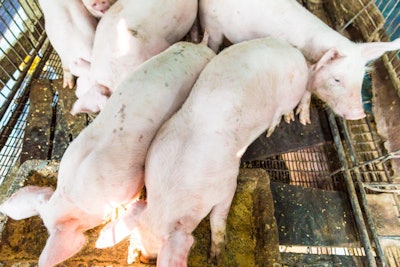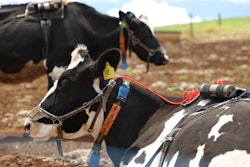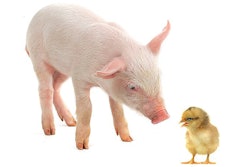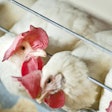
For animals of all ages, success could come down to taste
The issue of palatability is largely ignored when it comes to feeding farm animals, although it plays a huge role in pet (and human) nutrition. It is generally assumed that farm animals will consume a balanced feed at sufficient quantities to express their genetic potential, assuming the feed does not contain any toxic or highly unpalatable ingredients.
This is equivalent to saying that, not having another choice, farm animals being in confinement will end up eating their feed as they have no other option. This is indeed confirmed by choice-feeding trials where certain animal species have opted for a more palatable feed over one without much of a taste. Today, we will challenge this notion based on three assumptions:
- Young animals are very sensitive to palatability, and this is a fact well established.
To this end, not only highly palatable ingredients are used in such feeds, but also, artificial flavors are often added to further enhance palatability. I will not discuss the issue of using artificial flavors to mask the off taste of low-quality ingredients because, in my opinion, this is counterproductive. Young animals will refuse to eat an unpalatable feed, or at least reduce its intake, and everyone involved in such business is well aware of the fact – hence the success of flavors as an additive in many products destined for young animals, including piglet and calf feeds.
And it is not just young animals that appreciate a good-tasting feed. Sick, challenged, stressed and otherwise compromised animals are often offered a more palatable feed, even if this means a fresh batch or a bit of added molasses for fresh cows.
- Modern knowledge has dispelled the myth that birds do not care for taste because they do not have as many taste buds as mammals.
When taken as a ratio of number of buds per mouth volume, birds have a sufficient amount of taste buds to perfectly taste their feed. After all, we have many examples where birds have demonstrated they will reject a feed because it does not taste to their liking. Such is the case of high-tannin sorghum, which deters birds from eating it due to its highly astringent taste.
That birds will consume raw materials that we humans would not consider edible does not mean this is because they lack taste buds, but rather a different perception of palatability. The same can be said for other species as well. For example, a combination of fish and milk is unthinkable for many humans, yet piglets thrive on such feeds.
- Most growing animals that are raised for meat can be considered as still being very young. Broilers, for example, are marketed at 35 to 42 days in most cases, whereas maturity (as evidenced by egg laying) begins at 18 weeks or 126 days, which is thrice the age of a market broiler. And, while talking about broilers, today we have evidence that when these birds are offered a highly palatable super pre-starter feed, they can grow about 10% over their counterparts offered a more traditional diet. Even growing-finishing pigs that are marketed at 5 to 6 months of age and fed ad libitum are not mature animals, and they should be more susceptible to palatability compared, say, with a gestating sow, who is fed a restricted amount of feed to prevent obesity and will eat without much arguing about small lapses in palatability.
Palatability is not just about flavor additives
That palatability is the realm of additives called flavors is a notion of the Western world that has emerged during the past few decades. Perhaps, this is the natural consequence of formulating low-cost diets without paying attention to palatability – again giving more emphasis to balanced nutrients and not so much on ingredient selection. Thus, for piglets, for example, an artificial sweetener is often used compared with just adding table sugar, as was the case before the era of modern additives. There is nothing wrong with that, but we do miss many benefits that sugar brings to the feed compared to just adding a sweetener.
In my experience, palatability is a major issue in the Eastern world where it may be placed even above nutrients and balanced feeds. In some cases, I have experienced the truth of the matter, but this is rare and, in this region, today they have learned to balance the feeds properly based on modern knowledge that has been borrowed from the Western world. What they have not abandoned, however, is their insistence on having palatable feeds, at least for young animals. This has ramifications not only on formulation cost but also on marketing and sales penetration.
Challenging the young versus mature animal notion about feed palatability
I mentioned above that stressed mature animals are often offered more palatable feeds until they recover, or the stress factor is eliminated. I want to challenge this practice based on the fact that intensively raised animals are always raised under some form of stress, even if this is just metabolic stress to grow more than what would have been natural to them without genetic selection over the ages.
Perhaps I am wrong, but I see that today all animals raised under normal (less than ideal) conditions appreciate a more palatable feed, especially when their feed is switched from one that has many tasteless or slightly bitter or otherwise offensive raw materials.
Here, many will be surprised because I have a strong history of arguing about the importance of high-quality raw materials before one considers using flavor additives, and I want to make it clear that I have not changed my mind. And, for specific purposes, I use such additives like many other nutritionists do.
In the end, I still believe it is up to each nutritionist to decide how to go about improving feed palatability, and we still have a lot to learn about what palatability means for each farm animal species. Here, I am just wondering if we are missing something by not expanding this “young age” palatability notion to include all farm animals.













